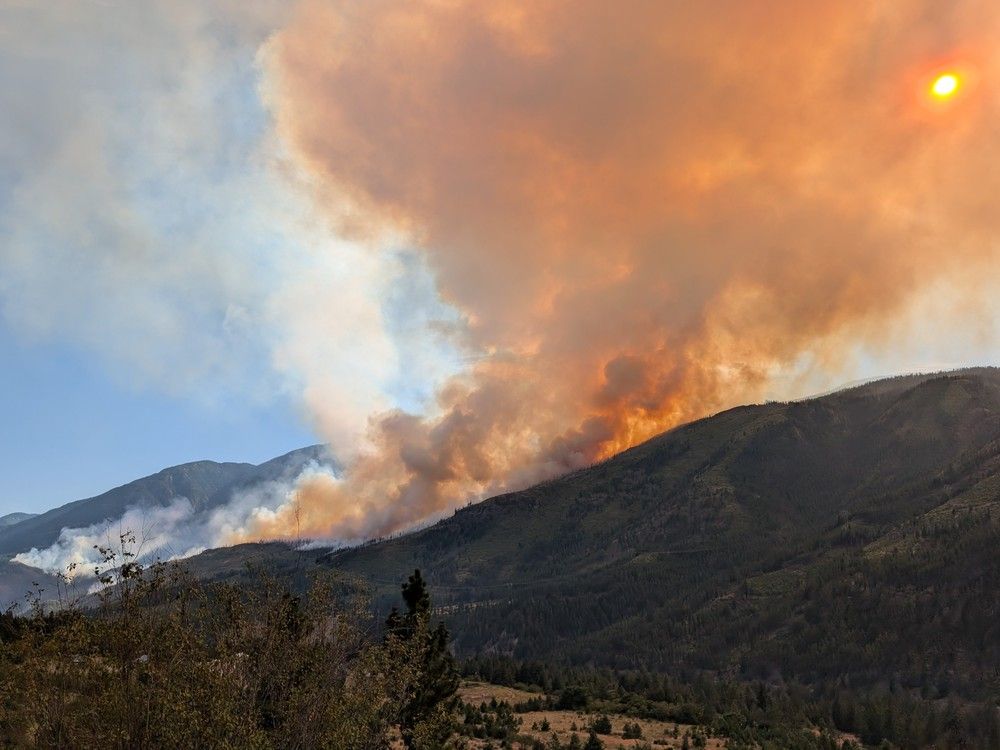
Here’s the latest news concerning climate change and biodiversity loss in B.C. and around the world, from the steps leaders are taking to address the problems, to all the up-to-date science.
Check back every Saturday for more climate and environmental news or sign up for our Climate Connected newsletter HERE.
In climate news this week:
• Vancouver Island resident still nervous after wildfire evacuation
• How Canadian wildfire smoke is jeopardizing health across North America
• Scientists now know what’s causing billions of sea stars to die
• New studies tie unrecognized deaths and health problems to Maui and L.A. wildfires
Human activities like burning fossil fuels and farming livestock are the main drivers of climate change, according to the UN’s intergovernmental panel on climate change. This causes heat-trapping greenhouse gas levels in Earth’s atmosphere, increasing the planet’s surface temperature.
The panel, which is made up of scientists from around the world, including researchers from B.C., has warned for decades that wildfires and severe weather, such as the province’s deadly heat dome and catastrophic flooding in 2021, would become more frequent and intense because of the climate emergency. It has issued a code red for humanity and warns the window to limit warming to 1.5 C above pre-industrial times is closing.
According to NASA climate scientists, human activities have raised the atmosphere’s carbon dioxide content by 50 per cent in less than 200 years, and “there is unequivocal evidence that Earth is warming at an unprecedented rate.”
As of Aug. 5, carbon dioxide in the atmosphere was 427.87 parts per million, slightly down from 429.61 ppm last month, according to NOAA data measured at the Mauna Loa Observatory, a global atmosphere monitoring lab in Hawaii. The NOAA notes there has been a steady rise in CO2 from under 320 ppm in 1960.

Climate change quick facts:
• The Earth is now about 1.3 C warmer than it was in the 1800s.
• 2024 was hottest year on record globally, beating the record in 2023.
• The global average temperature in 2023 reached 1.48 C higher than the pre-industrial average, according to the EU’s Copernicus Climate Change Service. In 2024, it breached the 1.5 C threshold at 1.55 C.
• The past 10 years (2015-2024) are the 10 warmest on record.
• Human activities have raised atmospheric concentrations of CO2 by nearly 49 per cent above pre-industrial levels starting in 1850.
• The world is not on track to meet the Paris Agreement target to keep global temperature from exceeding 1.5 C above pre-industrial levels, the upper limit to avoid the worst fallout from climate change including sea level rise, and more intense drought, heat waves and wildfires.
• On the current path of carbon dioxide emissions, the temperature could increase by as much 3.6 C this century, according to the IPCC.
• In June 2025, global concentrations of carbon dioxide exceeded 430 parts per million, a record high.
• Emissions must drop 7.6 per cent per year from 2020 to 2030 to keep temperatures from exceeding 1.5 C and 2.7 per cent per year to stay below 2 C.
• There is global scientific consensus that the climate is warming and that humans are the cause.
• Scientific information taken from natural sources (such as ice cores, rocks, and tree rings) and from modern equipment (like satellites and instruments) all show the signs of a changing climate.
(Sources: United Nations IPCC, World Meteorological Organization, UNEP, NASA, climatedata.ca)

Latest News
B.C. resident still nervous despite returning home after wildfire evacuation
A Vancouver Island artist who had to leave from her home studio near an out-of-control wildfire says she remains nervous despite being allowed back this week.
Ina-Griet Raatz-von Hirschhausen, whose home is a few kilometres from the Wesley Ridge wildfire near Cameron Lake, says she is waiting a bit longer to bring back half of her art collection, which was taken to a friend’s home when her family was told to evacuate late Sunday.
She left with her husband and two cats, and says she thought her home was lost as soon as the evacuation notice was issued, calling it “the very worst moment of the whole thing.”
A B.C. Wildfire Service information officer, Madison Dahl, told a news conference Friday that the fire’s behaviour overnight was “minimal” and was monitored by night-vision-equipped helicopters.
“Temperatures are forecast to increase through the weekend, and as temperatures rise today and into the weekend, we can expect fire behaviour to increase,” she said. “That’s going to be producing visible smoke as the fire consumes available fuels from within the fire perimeter.”
—The Canadian Press
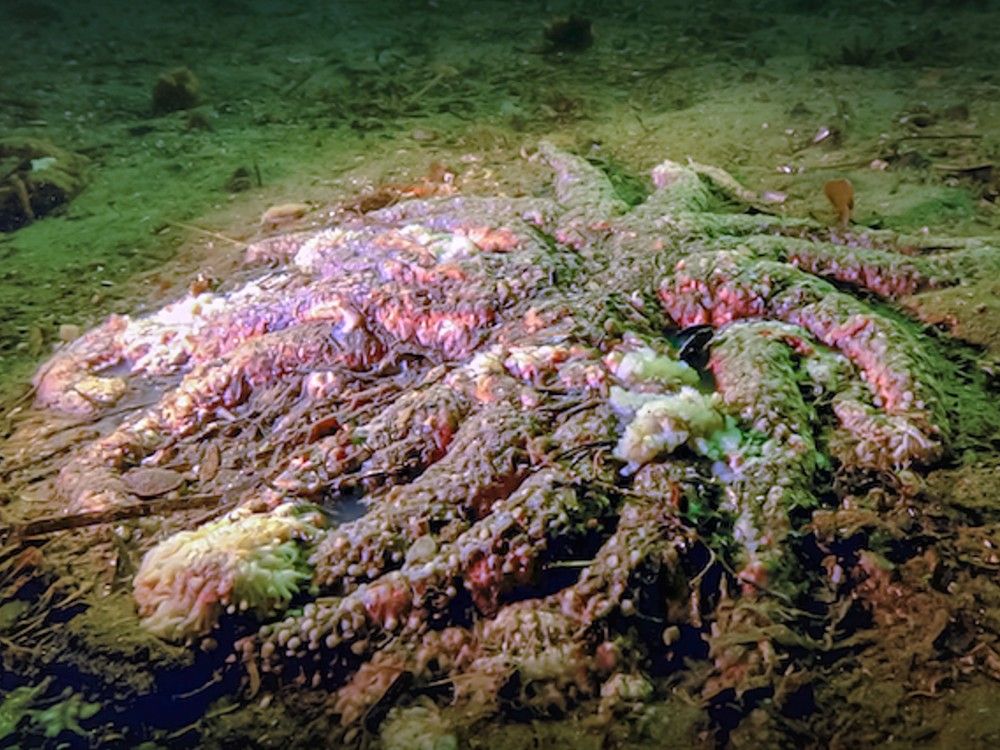
B.C. researchers now know what’s causing billions of sea stars to die
B.C. researchers have unlocked the mystery of why billions of sea stars have died over the past decade from B.C. to Alaska and to Mexico.
An international study, published Monday in Nature Ecology and Evolution and led by researchers at the University of B.C., the B.C.-based Hakai Institute, and the University of Washington, found that sea star wasting disease is caused by a strain of the bacterium Vibrio pectenicida — one that is related to cholera in humans. Other vibrio species can cause disease in corals and oysters.
Sea star wasting disease is considered one of the largest marine epidemics documented, said Alyssa Gehman, senior author of the study and a marine disease ecologist at the Hakai Institute and UBC.
Gehman said they estimate about six billion sunflower stars have been lost, and that’s just one of 26 species of sea star affected by the disease.
Sea stars are important to the ocean ecosystem because they are what scientists call a keystone species, keeping nature in balance.
With the loss of sea stars, one of their main food sources — sea urchins — began to thrive and when that happened urchins munched on kelp forests, decimating some of these important carbon sinks.
—Tiffany Crawford
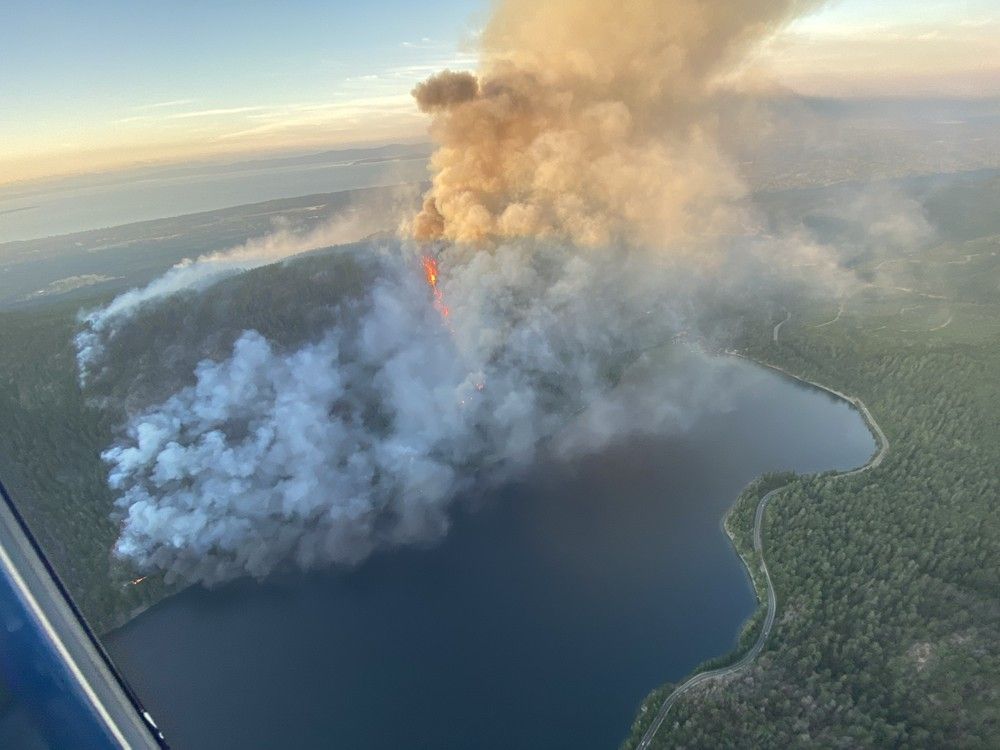
Canadian wildfire smoke is jeopardizing health across North America
The hazy air hovering over U.S. metropolises, including Chicago and New York, this summer is reminding Americans of just how connected they are with their Northern neighbour, regardless of how much relations have deteriorated under President Donald Trump.
Canadian provinces have evacuated towns and struggled to contain the second-worst wildfire season in 30 years, while residents of some U.S. cities have endured unhealthy air as smoke from the blazes wafts across the border.
The scenes of smoke-choked cities are reminiscent of 2023, when skies turned orange over New York City amid what was Canada’s worst wildfire season on record. They also come as the U.S. West’s wildfire season worsens, with blazes burning in California, Arizona and Nevada, and France deals with the fallout from its worst fires in seven decades, including smoke-damaged grapes across wine-growing regions.
The cross-border smoke drifting from Canada to the US, though, poses a particularly unique geopolitical issue. With climate change increasing the odds of extreme fire weather, it could mean more seasons of flames and smoke ahead.
—Bloomberg News
France’s largest wildfire in decades contained after devastating southern region and wine country
France’s largest wildfire in decades was contained Thursday after burning more than 160 square kilometres in the country’s southern wine region and claiming one life, local authorities said.
The blaze erupted Tuesday and tore through the Aude region, spreading rapidly due to hot, dry weather. Cooler overnight temperatures and calmer winds slowed its advance and allowed firefighters to make headway.
Late Thursday, the region’s top government official said the fire was contained. However, residents were warned not to return home without authorization, as many roads remained blocked and dangerous.
The fire swept through 15 communes in the Corbières mountain region, destroying or damaging at least 36 homes, with a full damage assessment still underway. One person died at home, and at least 13 others were injured, including 11 firefighters, according to local authorities. Three people who were reported missing have been found safe.
—The Associated Press
Wildfire burns north of L.A., with thousands under evacuation orders: report
A wildfire in the mountains north of Los Angeles continues to burn after it tore through thousands of acres and forced evacuations after igniting Thursday afternoon, according to a CNN report.
The report said it’s one of several notable fires that have exhibited explosive growth in recent weeks, spurred by searing heat and dry, gusty wind.
The Canyon Fire started around 1:30 p.m., and had burned through more than 5,300 acres of land by Friday evening, CNN reported.
—CNN
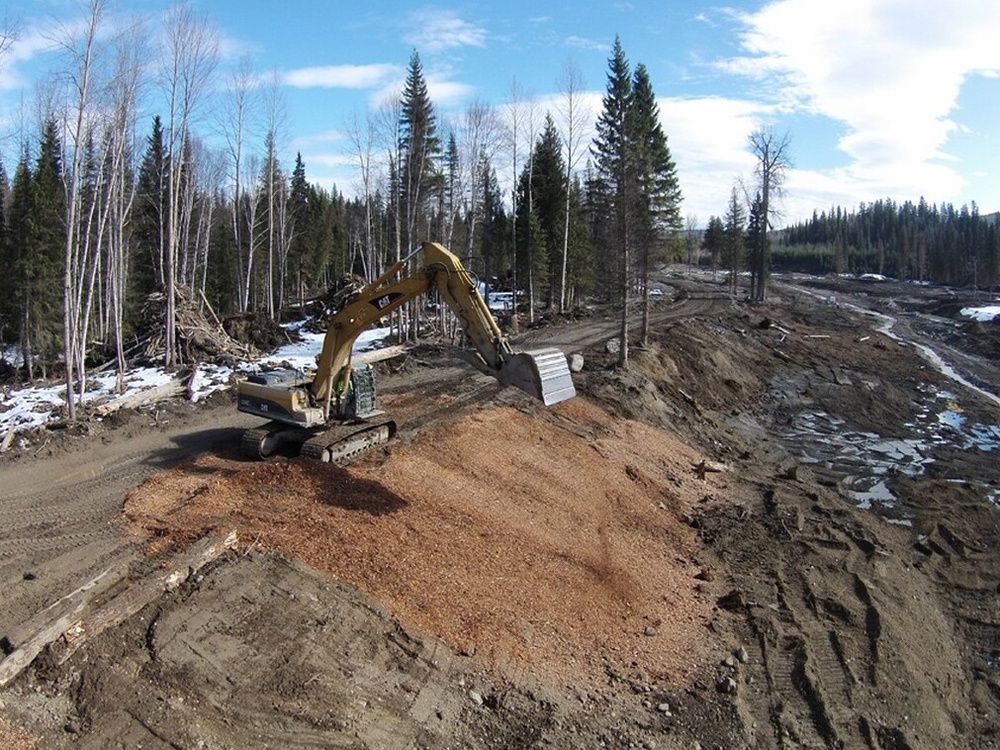
B.C. court rejects First Nation’s challenge to Mount Polley dam increase
The B.C. Supreme Court has dismissed a First Nation’s bid to stop a tailings dam from being raised at the Mount Polley mine site, which suffered a catastrophic dam collapse that spilled millions of litres of waste and water 11 years ago.
The Xatsull First Nation claimed the province’s approval of the plan to raise the level of the dam in B.C.’s Interior by four metres was improper and done without “meaningful” consultation with the nation.
But Justice Michael Tammen ruled Wednesday that the provincial government’s consultation with the Xatsull was proper.
“I view the consultation here as deep and, importantly, the process employed by the province provided Xatsull with ample opportunity to present their perspective,” Tammen said.
The First Nation said in a statement it was disappointed in the ruling.
“This is the same facility that breached and devastated Xatsull’s territory in 2014 — the worst mining disaster on record. Its impacts are still harming our nation’s rights, culture and way of life today,” it said.
—The Canadian Press
Scientists thought this Argentine glacier was stable. Now they say it’s melting fast
An iconic Argentine glacier, long thought one of the few on Earth to be relatively stable, is now undergoing its “most substantial retreat in the past century,” according to new research.
The Perito Moreno Glacier in the Southern Patagonian Ice Field for decades has been wedged securely in a valley. But it’s started losing contact with the bedrock below, causing it to shed more ice as it inches backward. It’s a change, illustrated in dramatic time lapse photos since 2020, that highlights “the fragile balance of one of the most well-known glaciers worldwide,” write the authors of the study in the journal Communications Earth & Environment.
They expect it to retreat several more kilometres in the next few years.
“We believe that the retreat that we are seeing now, and why it is so extreme in terms of values that we can observe, is because it hasn’t been climatically stable for a while now, for over a decade,” said Moritz Koch, a doctoral student at the Friedrich-Alexander University of Erlangen-Nuremberg and one of the study authors. “Now we see this very delayed response to climate change as it is slowly but surely detaching from this physical pinning point in the central part of the glacier.”
Koch and his team did extensive field work to get the data for their calculations. To measure ice thickness, they flew over the glacier in a helicopter with a radar device suspended beneath. They also used sonar on the lake and satellite information from above.
—The Associated Press
Hot, dry weather in Atlantic Canada prompts fire bans and increased penalties for violators
Drought conditions have beset Atlantic Canada with wildfires raging in some locales, with no relief in coming days, according to Environment Canada. The conditions are increasing the wildfire risk.
Three significant wildfires are already raging in Newfoundland and Labrador where fines for violators of the provincewide fire ban were increased Friday afternoon from $50,000 to $150,000, as well as up to a year in prison. (A first offence previously meant a $75 fine. Now it’s $50,000 for a first offence and payment defaulters risk imprisonment of six months.)
“It’s very clear that these penalties for violating the regulations needed to be higher, and everyone needs to take this seriously,” Premier John Hogan told CBC News. Members of the Canadian Armed Forces and Coast Guard are being deployed to help fight the fires.
New Brunswick also has a burn ban in place, while dry conditions have prompted the provincial government to restrict forestry industry activity until at least August 12.
—Stewart Lewis
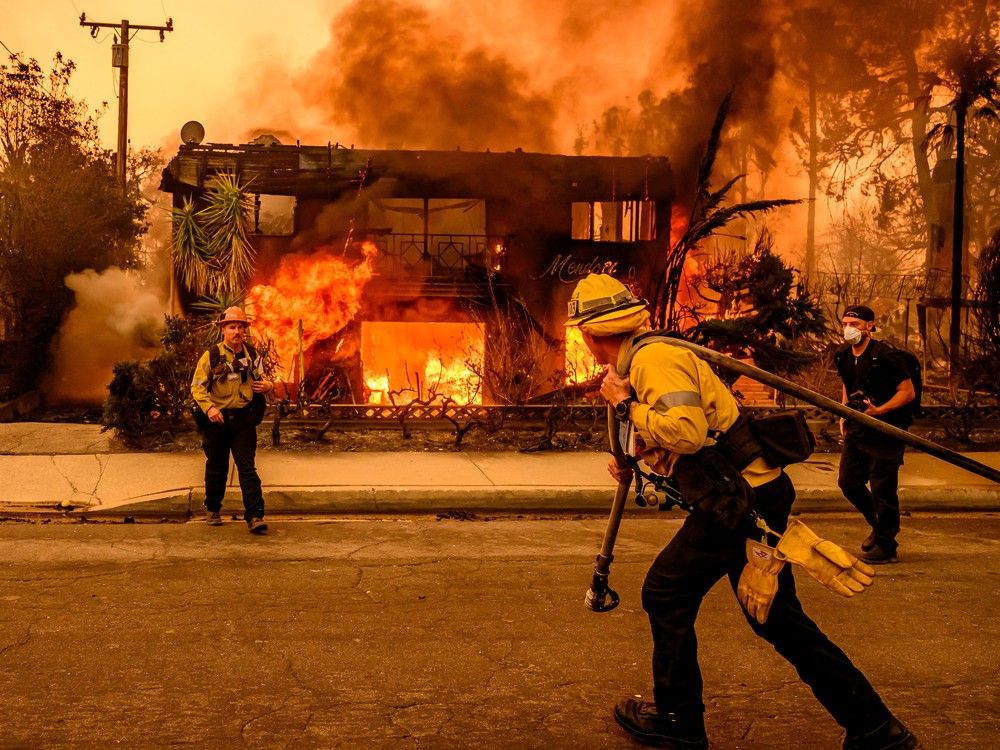
New studies tie unrecognized deaths and health problems to Maui and L.A. wildfires
The toll of wildfires is usually counted in acres burnt, property destroyed and lives lost to smoke and flames. But three studies published Wednesday suggest the cost to human health from the Maui and Los Angeles wildfires was substantially higher.
Two of the papers explore what happened after the Hawaii fire in August 2023 — one of the deadliest U.S. wildfires in a century. A third looks at the Los Angeles wildfires earlier this year.
The Maui fire was directly blamed for more than 100 deaths. But it also left 1 in 5 with lung damage and as many as half with symptoms of depression, the new research found. The month of the fire saw 13 suicide and overdose deaths, translating to nearly double the normal suicide and overdose death rates.
The study of the Los Angeles fires concluded that in addition to at least 30 deaths attributed to the fire, more than 400 other deaths could be blamed on the event, due to interruptions in health care and other factors.
The studies, published in two American Medical Association journals, add “a really important piece to the understanding of the true health risks from these extreme climatic events,” said Dr. Jonathan Patz, a University of Wisconsin environmental public health researcher who was not involved in the papers.
—The Associated Press
Chris Wright touts energy department report’s misleading climate claims
While promoting his agency’s recently released climate report, U.S. Energy Secretary Chris Wright has said that climate change is not making extreme weather more intense and more common.
That’s counter to authoritative climate science research. His statements come amid a push by the Trump administration to eliminate climate programs and scientist positions and to reduce access to past US-produced scientific reports, while issuing new material that goes against mainstream findings.
“There is now a large body of scientific research documenting that global warming has intensified several types of extreme weather events,” said Noah Diffenbaugh, a professor of Earth system science at Stanford University.
In a post this week on X, formerly Twitter, Wright said that reports that “climate change is making weather more dangerous and severe is just nonsense. That is just NOT true.” He underscored the point on Conservative commentator Ben Shapiro’s podcast.
Scientists now regularly tease out the effect of climate change on specific heat waves, droughts and rain and flood events. The methods used in what’s known as attribution research have been refined over the course of two decades, and build on a much longer history of climate modelling.
—Bloomberg News